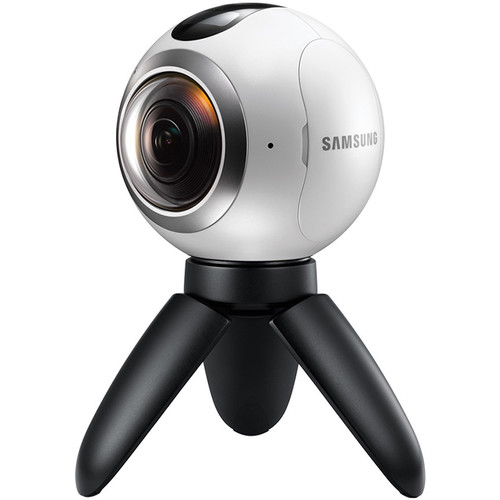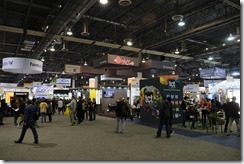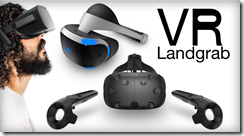Submitted by David Cardinal on Wed, 01/11/2017 - 12:27
CES 2017 was chock full of new 180-degree, 360-degree, and 3D/VR capture devices, priced from $150 to many thousands of dollars. No matter what your budget there was one being shown that would work. Of course, you need to pay more to get more, but there are even pro-quality devices around the $1,000 mark – a fraction of what they have been previously. I’ve rounded up some of my favorites, and also provided some definitions of the terms used by exhibitors to describe their devices in .
Submitted by David Cardinal on Wed, 12/14/2016 - 15:44
 This year has seen the first consumer-friendly 360-degree cameras capable of 4K video capture. 4K or better resolution is much more important for 360-degree cameras than for traditional models, because those 4,000 x 2,000 pixels have to cover a full 360-degrees of the scene. The best known of these cameras is Samsung's Gear 360, so we took one out for a spin to see if it is indeed a worthy upgrade to the Ricoh Theta S that we reviewed earlier in the year. In short, it is a solid step up in output quality, but at the cost of a somewhat-awkward form factor. Keep in mind that to use the full features of the you need to pair it with a Samsung Galaxy S6, S6 edge, S7, S7 Edge, or Note 5. It’s bundled software is also Windows-only.
This year has seen the first consumer-friendly 360-degree cameras capable of 4K video capture. 4K or better resolution is much more important for 360-degree cameras than for traditional models, because those 4,000 x 2,000 pixels have to cover a full 360-degrees of the scene. The best known of these cameras is Samsung's Gear 360, so we took one out for a spin to see if it is indeed a worthy upgrade to the Ricoh Theta S that we reviewed earlier in the year. In short, it is a solid step up in output quality, but at the cost of a somewhat-awkward form factor. Keep in mind that to use the full features of the you need to pair it with a Samsung Galaxy S6, S6 edge, S7, S7 Edge, or Note 5. It’s bundled software is also Windows-only.
Submitted by David Cardinal on Sat, 04/30/2016 - 08:10
Virtual Reality (VR) may not be directly affecting your photography yet, but there is no doubt it is a major new way to communicate visually, and this year it will begin to impact both still and video shooters. Along with its sibling, 360 photos and videos, it is a powerful new tool. However, it is really early days, and not everyone is cut out for taking the plunge. I put together a guide to the available , that will point you in the right direction based the level of your interest and enthusiasm – and budget.


 This year has seen the first consumer-friendly 360-degree cameras capable of 4K video capture. 4K or better resolution is much more important for 360-degree cameras than for traditional models, because those 4,000 x 2,000 pixels have to cover a full 360-degrees of the scene. The best known of these cameras is Samsung's Gear 360, so we took one out for a spin to see if it is indeed a worthy upgrade to the Ricoh Theta S that we reviewed earlier in the year. In short, it is a solid step up in output quality, but at the cost of a somewhat-awkward form factor. Keep in mind that to use the full features of the
This year has seen the first consumer-friendly 360-degree cameras capable of 4K video capture. 4K or better resolution is much more important for 360-degree cameras than for traditional models, because those 4,000 x 2,000 pixels have to cover a full 360-degrees of the scene. The best known of these cameras is Samsung's Gear 360, so we took one out for a spin to see if it is indeed a worthy upgrade to the Ricoh Theta S that we reviewed earlier in the year. In short, it is a solid step up in output quality, but at the cost of a somewhat-awkward form factor. Keep in mind that to use the full features of the 
